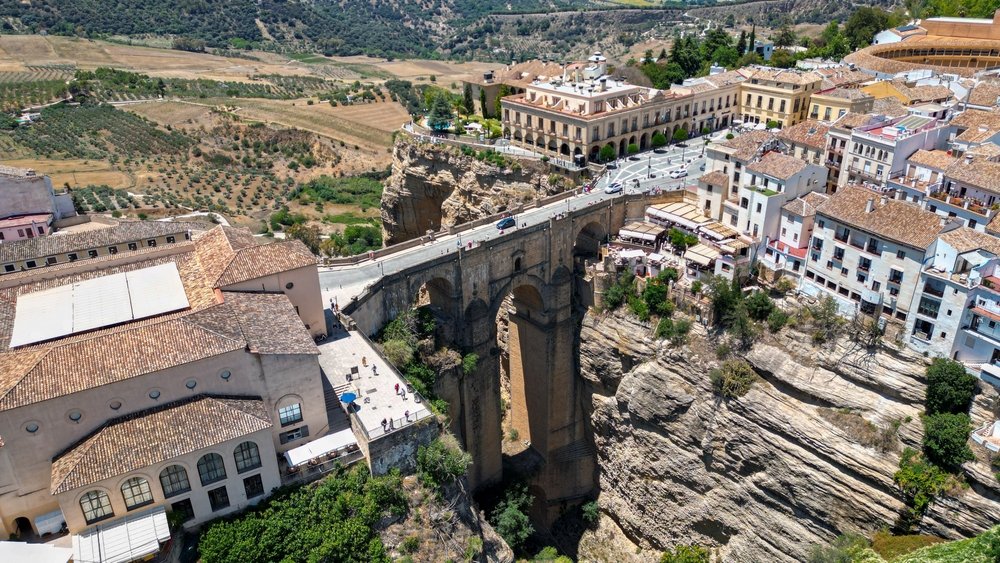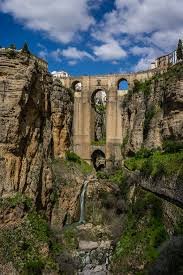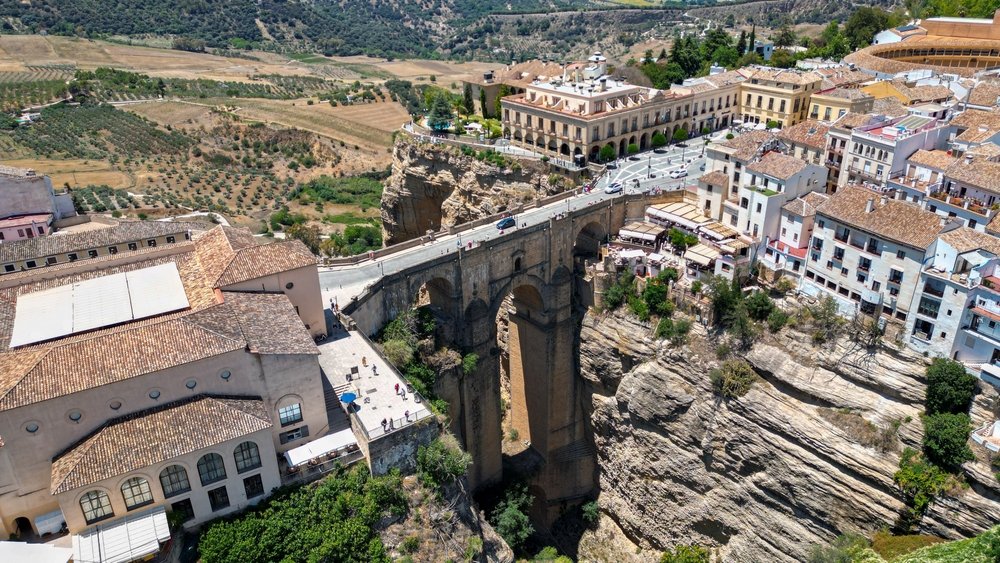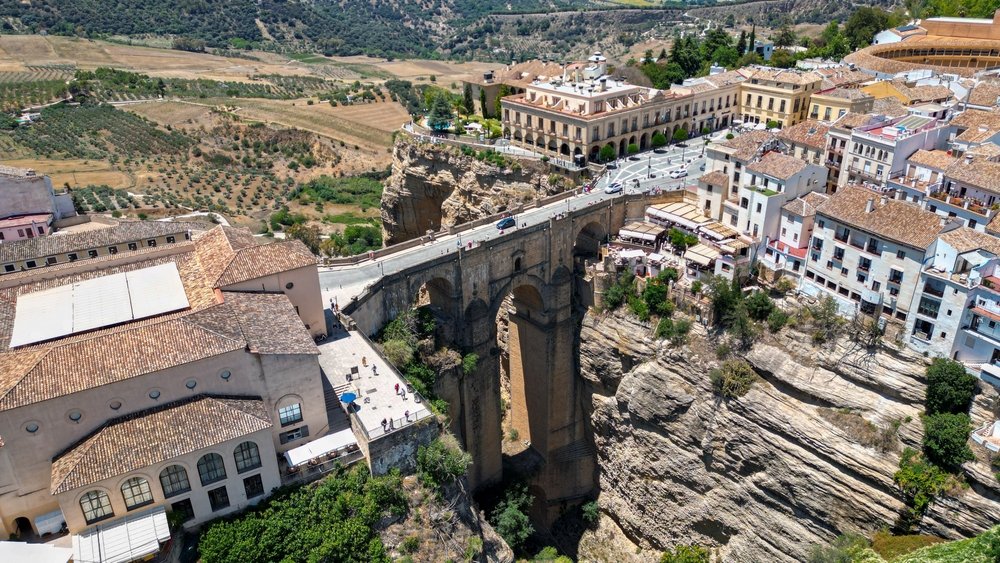History of Puente Nuevo
Construction of the Puente Nuevo began in 1751 and was completed in 1793, after more than 40 years of work. The bridge was designed to connect the old town of Ronda with the new part of the city, separated by the deep Tajo Gorge, which reaches over 100 meters in depth. Before this bridge, an earlier structure had been built in 1735, but it collapsed due to structural flaws.
The final design, by architect José Martín de Aldehuela, was based on a strong stone structure, using materials extracted from the gorge itself. This 18th-century engineering masterpiece has stood the test of time, enduring earthquakes and harsh weather conditions.
Architecture and Structure
Built with limestone, Puente Nuevo features three large arches that support its structure. The central arch, the largest, rises majestically over the gorge, while the two side arches provide stability and balance. The bridge stands over 98 meters high and spans approximately 70 meters in width.
A small chamber in the middle of the bridge was once used as a prison. During the Spanish Civil War, this chamber became a dungeon, and some stories claim that prisoners were thrown from the bridge into the abyss. Today, it houses an exhibition about the history of the bridge and its construction.

























